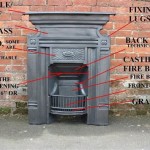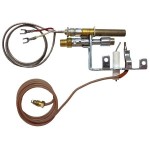Can You Replace A Gas Fireplace With Wood Burning? A Comprehensive Guide
The decision to switch from a gas fireplace to a wood-burning one is a significant undertaking involving several factors, ranging from structural considerations to local regulations. While seemingly a straightforward swap, the process often necessitates more than simply removing one appliance and installing another. This article delves into the various aspects of this conversion, providing a comprehensive overview of the key considerations involved.
A gas fireplace offers convenience, efficiency, and ease of use. They ignite quickly, require minimal maintenance, and provide consistent heat output. However, some homeowners prefer the ambiance, aroma, and traditional appeal of a wood-burning fireplace. The crackling sound of burning wood, the authentic flickering flames, and the rustic charm associated with a wood-burning fire are all factors that contribute to this preference. Understanding these motivations is the first step in determining whether the conversion is the right choice.
Key Point 1: Structural and Safety Considerations
One of the primary considerations when replacing a gas fireplace with a wood-burning one is the existing chimney structure. A gas fireplace typically vents through a smaller flue, often made of flexible metal. A wood-burning fireplace, on the other hand, requires a larger, more robust chimney constructed of brick or masonry with a clay tile liner, or a certified prefabricated metal chimney system designed for wood-burning. This is because wood fires produce significantly more smoke, creosote, and higher exhaust temperatures than gas fires.
The size and material of the existing chimney flue are critical factors. If the existing flue is too small or not rated for the high temperatures and corrosive byproducts of wood combustion, it will need to be replaced or relined. Relining involves installing a new metal flue liner inside the existing chimney, which is a more cost-effective solution than rebuilding the entire chimney. However, the existing chimney structure must be in sound condition to support the new liner.
A thorough inspection of the chimney is essential. A qualified chimney sweep or mason can assess the condition of the chimney, identify any cracks or deterioration, and determine whether it meets the necessary safety standards for wood-burning appliances. This inspection should include checking for proper clearance to combustible materials, such as wood framing or insulation, to prevent the risk of fire. The condition of the firebox itself also needs to be evaluated. Many prefabricated gas fireplace inserts are designed differently than those meant for wood, and may not withstand the intense heat of a wood fire.
Furthermore, the hearth, the non-combustible area in front of the fireplace opening, must be of adequate size and material to protect the flooring from sparks and embers. Building codes specify minimum hearth dimensions for wood-burning fireplaces, and these requirements must be met to ensure safety.
If the existing structure is inadequate, significant modifications or even a complete rebuild may be necessary. This can significantly increase the cost and complexity of the project. Therefore, a comprehensive assessment of the structural requirements is paramount before proceeding.
Key Point 2: Regulatory Compliance and Permits
Replacing a gas fireplace with a wood-burning appliance often requires obtaining permits from local building authorities. Building codes vary significantly from one jurisdiction to another, so it is crucial to research the specific requirements in your area. These codes address safety standards, emissions regulations, and proper installation procedures.
Permitting ensures that the installation meets specific safety requirements and that the appliance is installed correctly and safely. The permitting process typically involves submitting plans and specifications for the proposed installation, undergoing inspections during and after the installation, and paying associated fees.
Emission regulations are another important consideration. Some jurisdictions have restrictions on wood-burning appliances, particularly during periods of high air pollution. These regulations may require the use of EPA-certified stoves or inserts that meet specific emission standards. EPA-certified appliances are designed to burn wood more efficiently and produce less smoke and particulate matter. Failure to comply with these regulations can result in fines or other penalties.
It's crucial to consult with the local building department or a qualified contractor to determine the specific permitting requirements and emission regulations in your area. Ignoring these regulations can lead to costly delays, fines, and even the requirement to remove the non-compliant appliance.
Furthermore, homeowner's insurance policies may have specific requirements regarding wood-burning fireplaces. It is advisable to contact your insurance provider to ensure that the installation meets their criteria and that your coverage is not affected by the change. Some insurance companies may require annual chimney inspections or specific safety measures to maintain coverage.
Key Point 3: Cost Analysis and Installation Process
The cost of replacing a gas fireplace with a wood-burning one can vary significantly depending on the complexity of the project. Factors that influence the cost include the condition of the existing chimney, the need for structural modifications, the type of wood-burning appliance chosen, and the labor costs associated with installation.
The initial cost of a wood-burning fireplace insert or stove can range from several hundred to several thousand dollars, depending on the size, efficiency, and features of the appliance. A new chimney or flue liner can add several thousand dollars to the project, and structural modifications can further increase the cost. Labor costs can also vary depending on the complexity of the installation and the rates charged by local contractors.
Beyond the initial installation cost, there are ongoing expenses associated with owning a wood-burning fireplace. These include the cost of firewood, chimney sweeping, and routine maintenance. Firewood can be purchased from suppliers or harvested yourself, but it requires proper storage and seasoning to ensure efficient burning. Chimney sweeping is recommended at least once a year to remove creosote buildup and prevent chimney fires.
The installation process typically involves several steps. First, the existing gas fireplace must be disconnected and removed. Then, the chimney is inspected and prepared for the installation of the new flue liner or chimney. The wood-burning appliance is then installed according to the manufacturer's instructions and local building codes. Finally, the hearth and surrounding area are finished to create a safe and aesthetically pleasing environment.
It is highly recommended to hire a qualified and experienced contractor to perform the installation. A professional contractor can ensure that the installation is done correctly, safely, and in compliance with all applicable regulations. They can also provide valuable advice on selecting the right appliance and maintaining it properly.
Another cost consideration is the change to your homeowner's insurance. Adding a wood burning fireplace can increase your premium, as it adds a potential fire risk to your home. Be sure to inform your provider of the change and get an updated quote.
In conclusion, replacing a gas fireplace with a wood-burning one is a complex project that requires careful planning and execution. Thoroughly assessing the structural and safety considerations, complying with local regulations, and carefully analyzing the costs involved are all essential steps in making an informed decision.

Replacing A Gas Fire With Wood Burner

Do You Want To Replace Your Gas Fire With A Woodburner

Do You Want To Replace Your Gas Fire With A Woodburner

Want To Convert Gas Wood Fireplace Full Service Chimney

Can A Wood Burning Fireplace Be Converted To Gas The Flame Company

Converting A Fireplace To Wood Burning Stove Chesneys

Is It Time To Replace Your Old Gas Fire For A More Efficient Wood Burning Stove Alfred Poppins

Want To Convert Gas Wood Fireplace Full Service Chimney

Converting A Fireplace To Wood Burning Stove Chesneys

Convert Gas Fireplace To Wood
Related Posts








